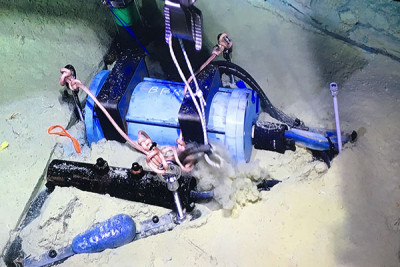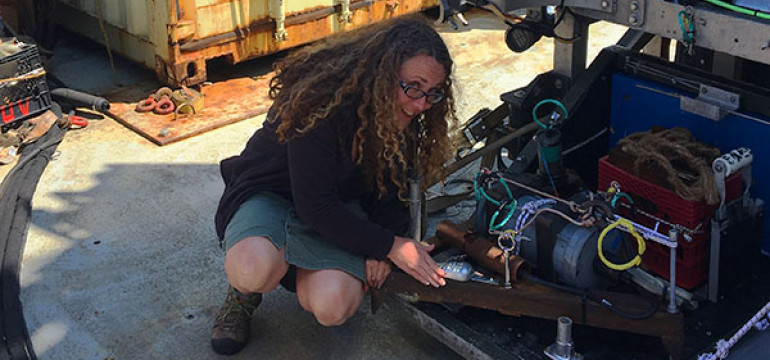EQC funds science on the seafloor
An underwater robot called Jason has recently placed the newest EQC-funded sensors 3500 metres below the ocean surface near the edge of the Hikurangi subduction zone.
Jason, says GNS Science scientist Dr Laura Wallace, is a robot with a highly skilled arm that will not only place the sensor exactly in place, but at regular intervals over the next five years, will return and plug in a connector to download the data for scientists to analyse.
EQC has provided funding for two special sensors to help the New Zealand and international effort to understand movement on the Hikurangi subduction zone, one of the biggest sources of seismic and tsunami hazard in New Zealand. The subduction zone is where the Pacific and Australian tectonic plates meet off the east coast of the North Island.
Dr Wallace says the Hikurangi subduction zone, where the Pacific plate is diving under the Australian plate, could generate a very large earthquake and tsunami.
“We want to understand a lot more about what is happening out there. Although we’ve got GeoNet monitoring signals from onshore, we also need to better understand what’s happening on the offshore part of the plate boundary, as this is where tsunami are generated. There is a major international effort underway to do this, funded by the MBIE Endeavour Fund and many other international science funding agencies,” she says.

“Some of this work involves putting Absolute Pressure Gauges (APGs) on the seafloor to monitor how it is moving upward or downwards – especially when there is a slow slip or “silent earthquake” as has been happening over the past month offshore the east coast of the North Island.
“These pressure gauges continuously measure changes in pressure from the overlying water, so is sensitive to centimetre-level changes in seafloor elevation, as occurs during slow slip events.
“One important component of using pressure sensors to resolve centimetre-level seafloor movement is being able to strip out the effects of tides and currents on the pressure readings,”she says. “The EQC-funded pressure gauges will be in place for at least 5 years, and are going to provide an important baseline dataset to help GNS and the other international scientists do just that.”
Dr Wallace says that “having the new EQC-funded gauges undertaking continuous readings over five years is greatly needed. With Jason’s expert help, they can stay on the seafloor and keep feeding scientists with much-needed information about activity on New Zealand’s largest plate boundary.”
EQC’s Dr Hugh Cowan says EQC is pleased to be making a contribution to such an important research topic. “We know the Hikurangi subduction zone is New Zealand’s biggest ‘earthquake factory’. The more we can understand its behaviour, the better communities can plan and prepare to reduce the impact of an earthquake or tsunami generated at sea from this zone.”
As with all EQC-funded research, data from the sensors will be freely available.
